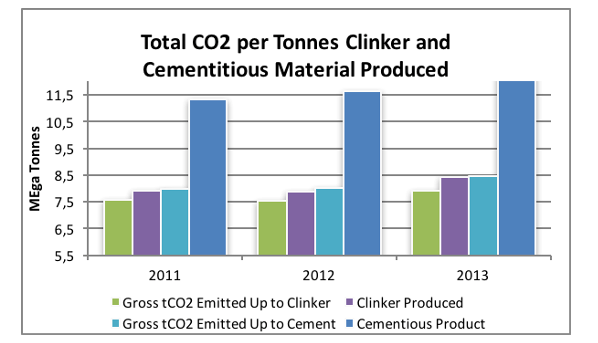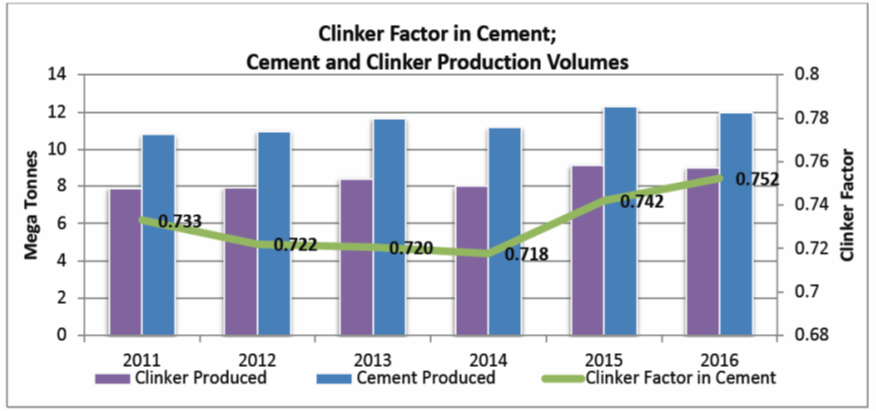Continued global growth increases the demand for construction materials. According to the World Wildlife Fund, the consequence of this growth is the projected global production of cement in 2030 will grow to a level roughly five times higher than that of 1990, or close to 5 billion tonnes worldwide. In turn, this growth impacts the overall level of greenhouse gas (GHG) emissions since the production of each tonne of cement produced results in emissions of roughly 0.648 tonnes of CO2 by CCSA members in 2013. The key drivers ensuring a continual downward trend in CO2/tonne cement relate to the extent of alternate materials used and the implementation of energy efficiency measures at member operations. Future effort will be directed to the use of alternate fuels to substitute conventional fuels.

Figure 4: Total carbon emissions
Figure 4 indicates total CO2 emissions for clinker and cementitious material produced. The production output of members has increased whilst the ratio of tonne CO2 produced per tonne cementitious material and per tonne clinker has reduced over the reporting period.
Indirect CO2 emissions from electricity (Table 2) used in cement production fluctuated, but shows decline in tonnes CO2 per tonne of cement toward the last reporting year.

Table 2: Indirect CO2 emission intensity
Figures include data from AfriSam, Lafarge, PPC, and NPC, as reported on WBCSD tables.



